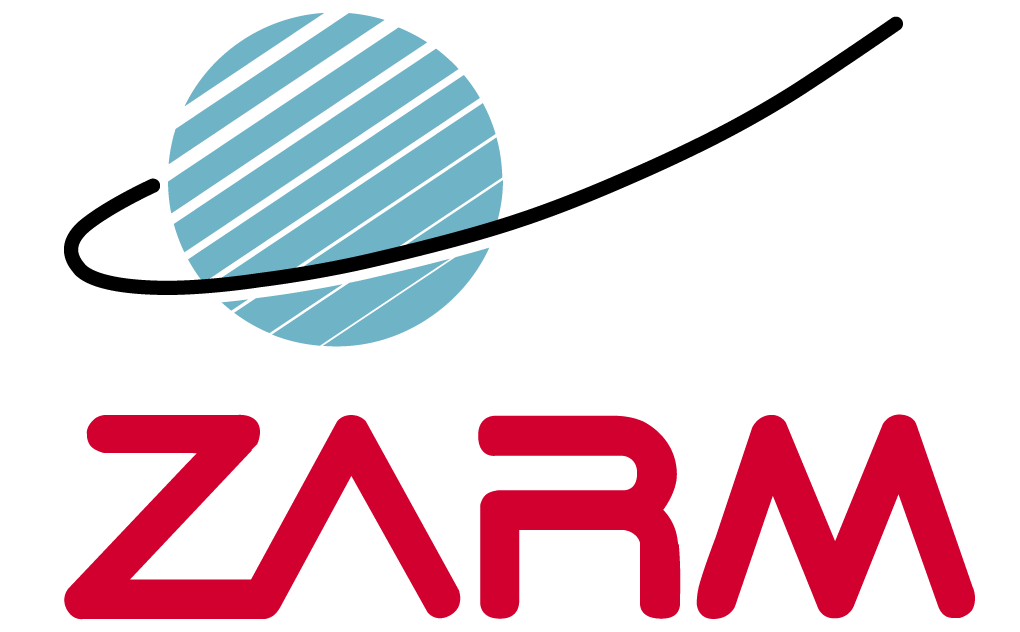Multiphase Flows
ABOUT OUR RESEARCH
The Multiphase Flows working group is engaged in the field of application-oriented basic research. The application is fluid handling in different types of spacecrafts like modern cryogenic upper stages of rockets or orbital depots. Other applications are new types of aircrafts, using cryogenic fuel for propulsion. The research focuses on fluid mechanical and thermodynamic processes associated with both storable and cryogenic fluids under different acceleration conditions. Over the last 20 years, the working group has built up special expertise in the theoretical and experimental investigation of cryogenic fluids like liquid methane and liquid hydrogen in particular. A small selection of current research topics is presented in the left-hand row of images.
The fluid system under investigation can be a single species two-phase fluid system consisting of the liquid and the gaseous phase of the same species or a multi-species two-phase fluid system. A multi-species two-phase fluid system consists of the liquid and the gaseous phase of more then one species. In order to investigate the influence of different acceleration levels different experiment environments are frequently in use: ground experiments (under Earth’s gravity), drop tower experiments (4.7 s up to 9 s in reduced gravity), parabolic flight experiments (22 s in reduced gravity per parabola), sounding rocket experiments (up to several minutes in reduced gravity), experiments on the international space station (permanent environment of reduced gravity). The theoretical methods in use are CFD programs (computational fluid dynamics) such as OpenFOAM, FLOW-3D, ANSYS Fluent and Star CCM +, which allow a resolution of physical processes in one, two or three spatial directions. Furthermore, simplified methods such as layer and node models are in use, which provide a resolution in one or no spatial direction, each.
Investigation of the key technologies for orbital depots: vented filling under reduced gravity
In the frame of the past project ZBOT-FT and the current project ZBOT-FT 2 (zero boil-off tank experiment – filling and transfer) the filling of a tank with liquid, the transfer of fluid from one tank to another and the liquid removal from a tank are investigated theoretically and experimentally. Following the German government's current space strategy from 2023, in the field of action 2.8 International space exploration in-orbit refueling is explicitly proposed as a technology for the Lunar Gateway. Next to successfully performed ground experiments under Earth's gravity conditions, experiments in the drop tower Bremen under microgravity conditions and parabolic flight experiments, an experiment of the international space station is under development (phase A). The experiment is part of a series of four experiments on the ISS. Hereby, ZBOT-FT is the first one with german participation and international cooperation between the NASA Glenn Research Center, the Case Western Reserve University, Airbus Defense and Space and ZARM at the University of Bremen.
What to see in the video?
In the video above four drop tower experiments on vented filling of a cylindrical tank with liquid are shown. The experiment time in reduced gravity is 9 s. The test liquid is HFE 7500 in environment of air. The first video on the left hand-side shows a stable filling configuration for a subcritical volume inflow rate of liquid. The development of a liquid geyser at the free surface is clearly visible. The three videos on the right hand-side show unstable filling configurations for critical and supercritical liquid volume inflow rates. The separation of droplets and the development of a liquid jet from the free surface are clearly visible. For more information the publications Govindan and Dreyer 2023a, Govindan and Dreyer 2023b and the dissertation Govindan 2024 from the publication list are recommended.
Our fields of research
The following fluid mechanical and thermodynamic processes are of special research interest:
- two phase flows with free surfaces,
- interface dynamics,
- sloshing,
- flow phenomena in porous media: wicking, flow through screen pressure loss, bubble point pressure,
- liquid-gas and gas-liquid phase separation,
- phase change (evaporation and condensation),
- boiling and pool cavitation,
- conjugate heat transfer.
The investigations of these processes are performed under different acceleration conditions and with both storable and cryogenic fluid systems.
CONTACT
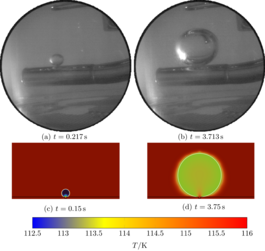
Cavitation and boiling of methane and hydrogen under microgravity (KASIMOFF 2)
Introduction
The goal of the project is to investigate the phase change of cryogenic propellants. Phase change plays a major role in the utilization of cryogenic propellants for extend missions of rocket upper stages or propellant depots. The investigations use numerical tools and an experimental test facility to investigate the growth of a vapor bubble at an artificial nucleation site. The experiments were performed using cryogenic fluids under microgravity provided by the drop tower.
Methods
In the bath cryostat at the center of the experimental setup is a single artificial nucleation site. The vapor bubble growth in the cryogenic fluid is initiated there. Tests were performed with hydrogen at a temperature of 20 K and methane with a temperature of 111 K as test fluids.
During the microgravity vapor bubble growth was initiated by heating to investigate the bubble dynamics during a boiling process at constant pressure. In this case the bubble grows because heat transfer from the solid to the liquid superheats the liquid above the saturation temperature and thus causes evaporation.
In addition to the boiling results bubble growth during a depressurization of a saturated single species system was investigated as well. This process is of special interest during the preparation of an engine restart of a rocket upper stage in space. During the depressurization the saturation temperature decreases and a uniform superheat is introduced in the liquid. This is different to the commonly modeled process of nucleate boiling at an immersed body and thus requires a different modelling approach. The bulk of the energy required for the evaporation of liquid is supplied by the uniformly superheated bulk liquid and not a thin thermal boundary layer around a wall.
Results
Experimental data in cryogenic hydrogen and cryogenic methane was optically evaluated and the bubble growth at the given thermodynamic state was correlated to the applied stimuli. This data could then be used to construct numerical models of the physical heat and mass transfer processes involved in the bubble growth process.
The project KASIMOFF 2 under the grand number 50RL2290 is funded by financial means of the German Federal Ministry for Economic Affairs and Climate Action (BMWK) through the German Aerospace Center (DLR e.V.).
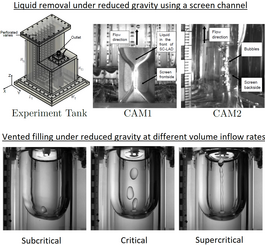
Zero boil-off tank experiment - filling and transfer (ZBOT-FT 2)
Introduction
The successfully completed project ZBOT-FT and the ongoing follow-up project ZBOT-FT 2 have been and are being conducted to investigate the fluid mechanical and thermodynamic processes associated with the following operations: filling of a tank with liquid, removal of liquid from a tank - both under reduced gravity - and fluid transfer between two tanks under Earth's gravity. These processes can be understood as key technologies for orbital propellant depots.
The projects ZBOT-FT and ZBOT-FT 2 are part of a series of four experiments on the International Space Station (ISS): ZBOT-1 (successfully completed in 2017), ZBOT-NC, ZBOT-DP, and ZBOT-FT (planned for 2029, currently in Phase A). ZBOT-FT is the first project with German involvement. Within the scope of ZBOT-FT and ZBOT-FT 2, in addition to laboratory, parabolic flight, and drop tower experiments, an experiment for the International Space Station is being developed in cooperation with Airbus Defence and Space, as well as the project partner Prof. Kassemi from Case Western Reserve University and NASA Glenn Research Center, USA.
Methods
To investigate the fluid mechancial and thermodynamic processes during the filling process of a tank with liquid, the liquid removal process, and the fluid transfer, both experimental and theoretical methods are employed. The experimental methods consist of four different approaches, distinguished by the residual acceleration acting on the test cell.
- Laboratory experiments under Earth's gravity (1g).
- Drop tower experiments in Bremen under microgravity (10⁻⁶g) with a free-fall duration of up to 9 seconds.
- Parabolic flight experiments under reduced gravity (±10⁻²g) lasting approximately 22 seconds per parabola.
- Experiments on the International Space Station, conducted in a permanent microgravity environment.
The experiments are continuously accompanied and assisted by theoretical studies. The theoretical work primarily involves numerical simulations using appropriate computational fluid dynamics (CFD) programs such as FLOW3D and ANSYS Fluent.
Results
The conducted experiments provide test data under both reduced gravity and Earth's gravity. The data includes local pressure and temperature measurements, volumetric flow rate measurements, as well as high-resolution black-and-white image recordings using high-speed cameras. These data offer insights into the behavior and stability of the free surface during tank filling, the flow dynamics and phase separation within and at a screen channel during liquid removal, and the thermodynamic states during fluid transfer.
The project ZBOT-FT 2 under the grand number 50WM2248 is funded by financial means of the German Federal Ministry for Economic Affairs and Climate Action (BMWK) through the German Aerospace Center (DLR e.V.).
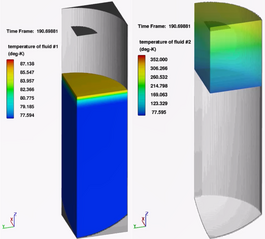
Hydrogen conditioning and safety for novel propulsion systems - system simulation and verification (WAKOS)
Introduction
The joint project Hydrogen Conditioning and Safety for novel propulsion systems aims to contribute to environmentally friendly aviation. The focus here is on alternative propulsion systems and hydrogen technology. As a substitute for fossil fuels, hydrogen can contribute to the reduction of CO2 emissions if it is produced from renewable energies. The handling of liquid hydrogen at a saturation temperature of approx. 20 K (-253 °C) at a saturation pressure of approx. 1 bar is a technological challenge that is to be overcome through an innovative approach by all partners.
The contribution of the University of Bremen, ZARM, lies in the processing of physical principles of the behavior of liquid hydrogen in a closed container, the tank, taking into account all the influences during the aircraft operation (temperature, pressure, acceleration profiles, etc.). As a result, the technical realization of the storage and distribution system of liquid hydrogen can be optimally adapted to the environmental conditions. The intended work represents an expansion of knowledge for aeronautical applications.
Objectives and methods
The focus of the work, done by the University of Bremen, ZARM, with regard to the project WAKOS is on the theoretical modeling of the fluid mechanical and thermodynamic processes that are to be expected during the operation of a hydrogen aircraft in the fuel tanks. These processes are modelled with the aid of three different theoretical approaches, which differ in terms of the spatial resolution of the problem being computed:
- Numerical simulations using CFD software, such as FLOW-3D and Star CCM +, to predict instationary fluid mechanical and thermodynamic processes in one, two, or three spatial directions,
- Layer models for predicting physical processes in one spatial direction,
- Node models for predicting physical processes without spatial resolution.
In order to validate the tools so-called benchmark calculations are performed. Hereby, published cryogenic experiments and theoretical models with known analytical or numerical solutions are implemented in and solved by the CFD tools before a comparison of the results with the known solutions is performed. The comparison leads to an evaluation of the modeling capacities of the tool with regard to the considered physical processes.
Results
On the left-hand-side of this website entry, a numerical simulation of a published cryogenic experiment is shown. The software FLOW3D has been used in order to numerically simulate the phase change process during a liquid nitrogen experiment under Earth's gravity conditions. The experiment is described in the paper Ludwig and Dreyer 2014 from the publication list. The simulation uses the so-called Volume of Fluid Method in order to numerically solve the mass, linear momentum and energy conservation equations for the liquid and the gaseous phase with respect to boundary conditions and initial values. The domain is defined in a Cartesian coordinate system with a resolution of the three spatial directions: x, y, z. Symmetry planes are used in order to simplify the domain to a quarter of the full setup. The simulation has been performed by Dr.-Ing. André Pingel.
The project WAKOS under the grand number 20M2106H is funded by financial means of the German Federal Ministry for Economic Affairs and Climate Action (BMWK) through the German Aerospace Center (DLR e.V.).
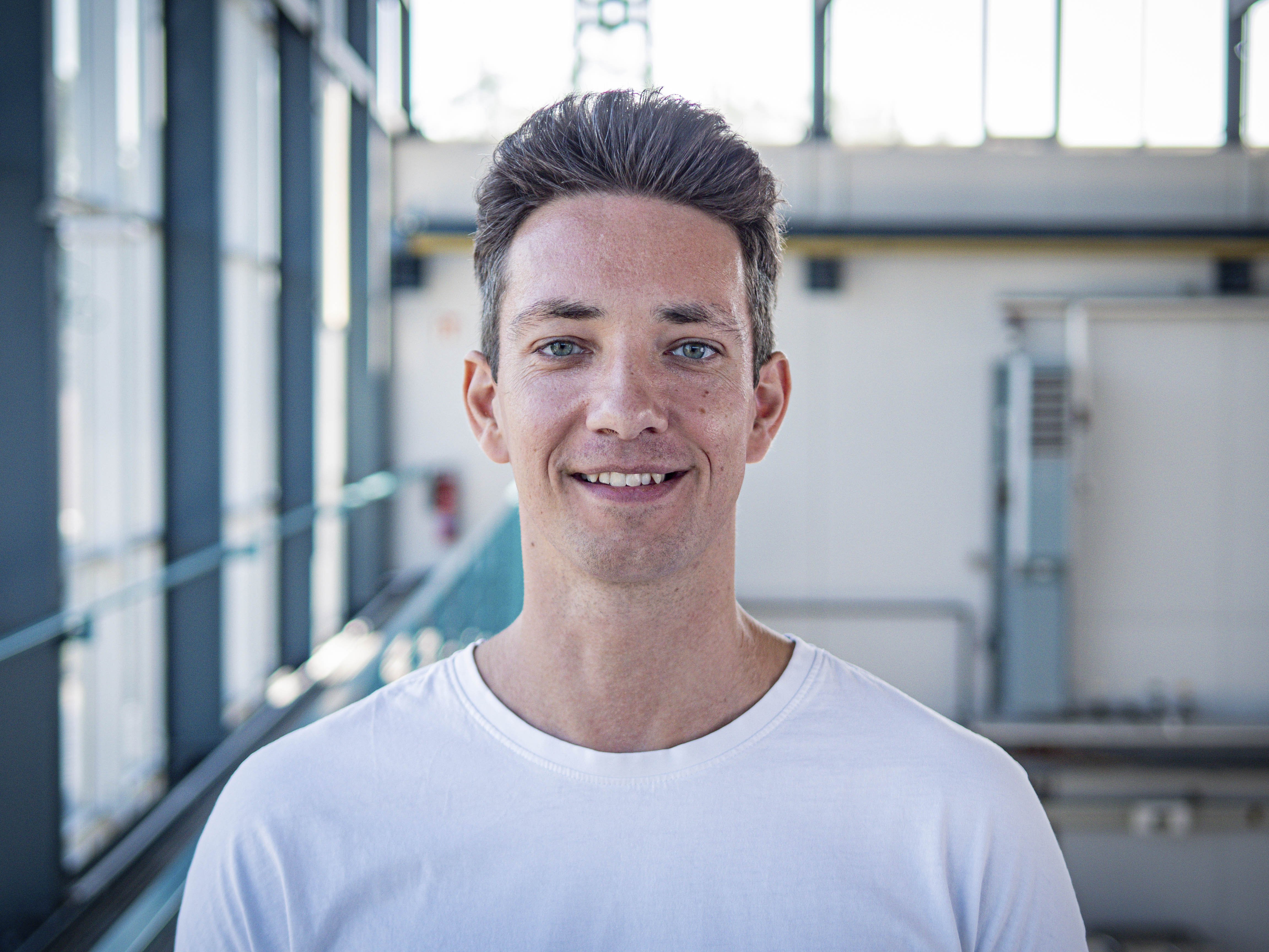
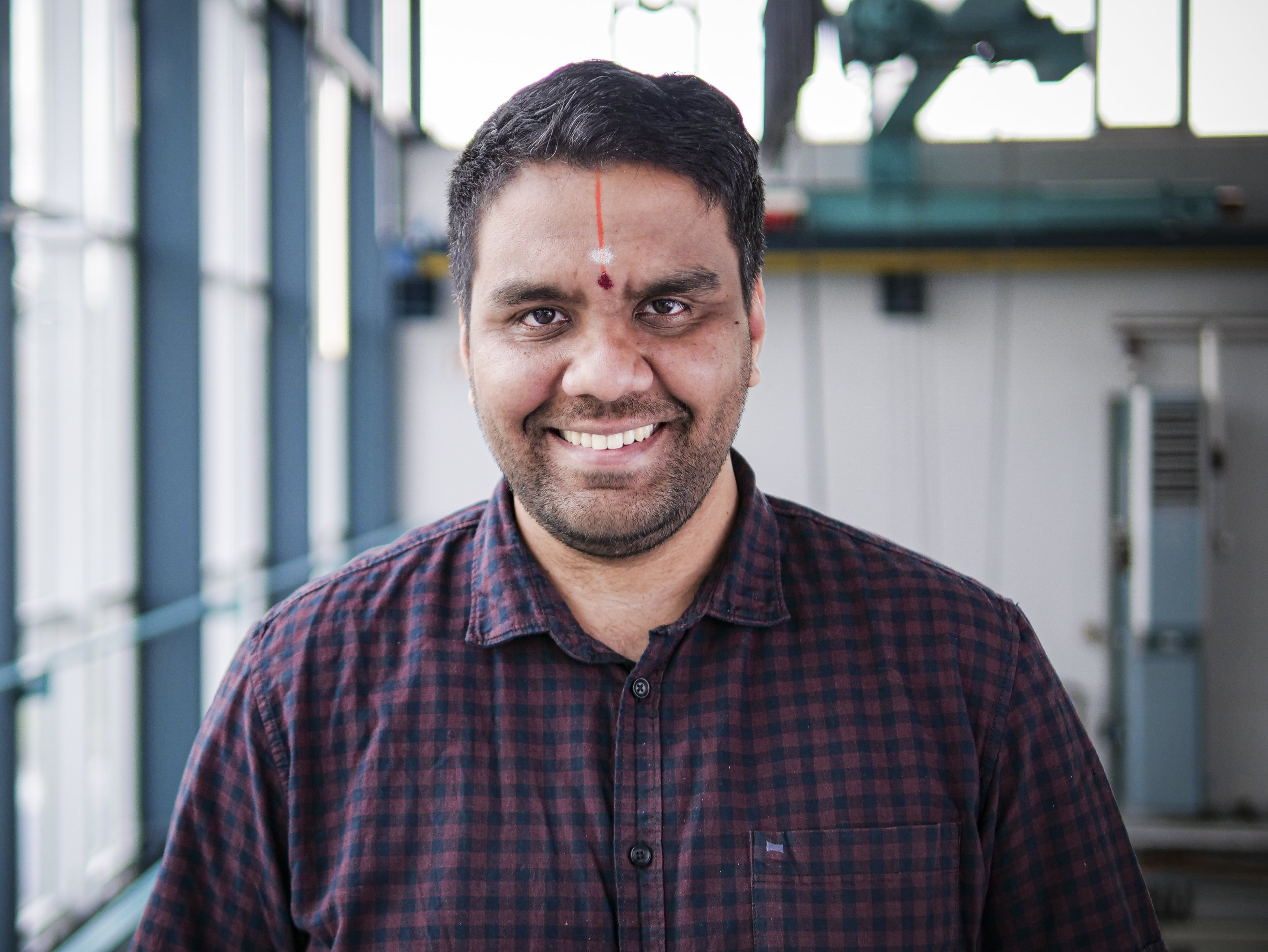




The list below shows the latest 25 publications of this research group. For the complete, searchable list of ZARM publications, please click more
Cryogenic Propellant Management in Space: Open Challenges and Perspectives
npj Microgravity, 10 (34) :1—13
2024
Investigation of Interface Stability During the Filling of Liquid into a Tank Under Reduced Gravity
PhD Thesis
Universität Bremen
2024
Phase Separation through Screen Channel Liquid Acquisition Devices in Microgravity
Microgravity Science and Technology, 36 (7) :1—23
2024
2023
Depressurization Induced Vapor Bubble Growth in Liquid Methane During Microgravity
Cryogenics, 134 :103716
2023
Experimental Investigation of Liquid Interface Stability During the Filling of a Tank in Microgravity
Microgravity Sci. Tec., 35 (23) :1—23
April 2023
Numerical Investigation of Interface Stability in Reduced Gravity for the Application of on-orbit Refueling of Spacecraft Tanks
International Journal of Energetic Materials and Chemical Propulsion, 22 (5) :27—44
2023
2021
Experimental and Theoretical Investigations of the Physical Processes Related to the Retention Capability of a Double Screen Element against Liquid Hydrogen in Earth's Gravity and in Microgravity with Respect to the Applied Stimuli
PhD Thesis
Universität Bremen
2021
2020
Phase Separation in Porous Media Integrated Capillary Channels
Microgravity Sci. Technol., 32 :1001—1018
2020
2019
Liquid Hydrogen Sloshing in Superheated Vessels Under Microgravity
Experimental Thermal and Fluid Sciences, 106 :100
2019
Phase Separation of Liquid from Gaseous Hydrogen in Microgravity - Experimental Results
Microgravity Science and Technology, 31 (5) :649—671
2019
2018
Experimental and Theoretical Investigations of Wicking in Porous Media
Publisher: Dissertation University of Bremen, Cuvillier Verlag
2018
Stability of Free Surfaces in Single-Phase and Two-Phase Open Capillary Channel Flow in a Microgravity Environment
Publisher: Dissertation University of Bremen, Cuvillier Verlag
2018
2017
Experimental and Numerical Investigations of Two-Phase Flow with Non-Isothermal Boundary Conditions under Microgravity Conditions
Publisher: Cuvillier Verlag
2017
Stability of Free Surface Flow in Capillary Channels with Rectangular Cross-Sections
Publisher: Dissertation University of Bremen, Cuvillier Verlag
2017
2016
Free Surface Deformation and Heat Transfer by Thermocapillary Convection
Heat Mass Transfer, 52 (4) :855—876
2016
Wicking into Porous Polymer-Derived Ceramic Monoliths Fabricated by Freeze-Casting
Journal of the European Ceramic Society, 37 (5) :1993—2000
2016
Wicking of Liquid Nitrogen into Superheated Porous Structures
Cryogenics, 78 :27—39
2016
2015
Free Surface Oscillations of Liquid Hydrogen in Microgravity Conditions
Cryogenics, 72 (1) :22—35
2015
Free Surfaces in Open Capillary Channels – Parallel Plates
Phys. Fluids, 27 (012106) :1—21
2015
2014
Heat and Mass Transfer at a Free Surface with Diabatic Boundaries in a Single-Species System Under Microgravity Conditions
Exp. Fluids, 55 (1760) :1—18
2014
Interface Reorientation of Cryogenic Liquids Under Non-isothermal Boundary Conditions
Cryogenics, 62 :48—59
2014
Investigations on Thermodynamic Phenomena of the Active-Pressurization Process of a Cryogenic Propellant Tank
Cryogenics, 63 :1—16
2014
Transient Capillary Channel Flow Stability
Microgravity Sci. Technol., 26 (6) :385—396
2014
2013
Capillary Channel Flow Experiments Aboard the International Space Station
Phys. Rev. E, 88 (063009) :1—8
2013
Double Porous Screen Element for Gas-Liquid Phase Separation
Int. J. Multiphas. Flow, 50 :1—15
2013



